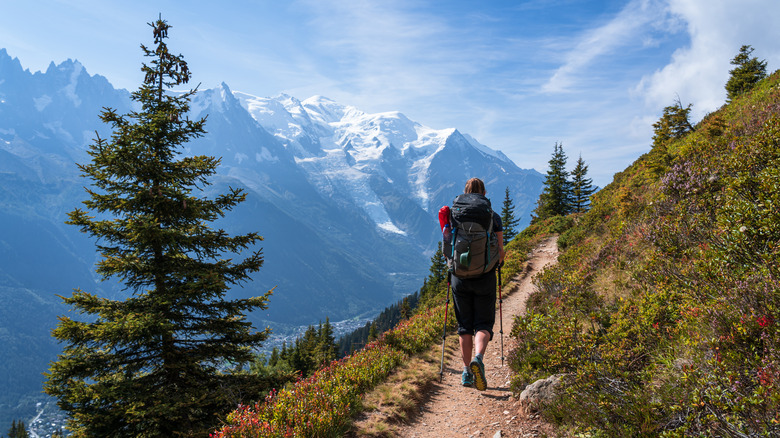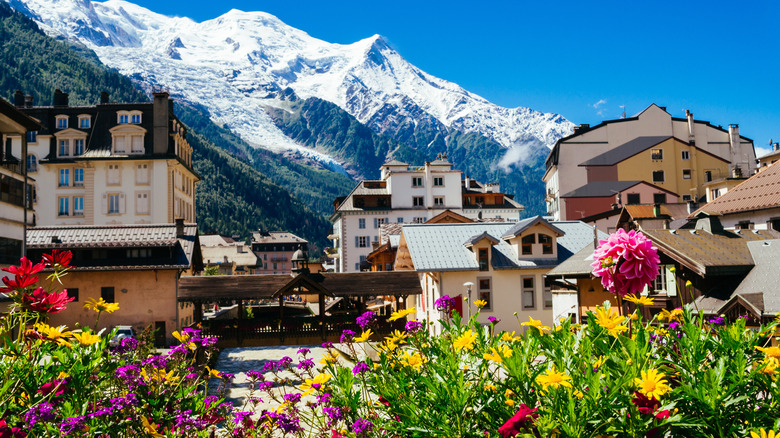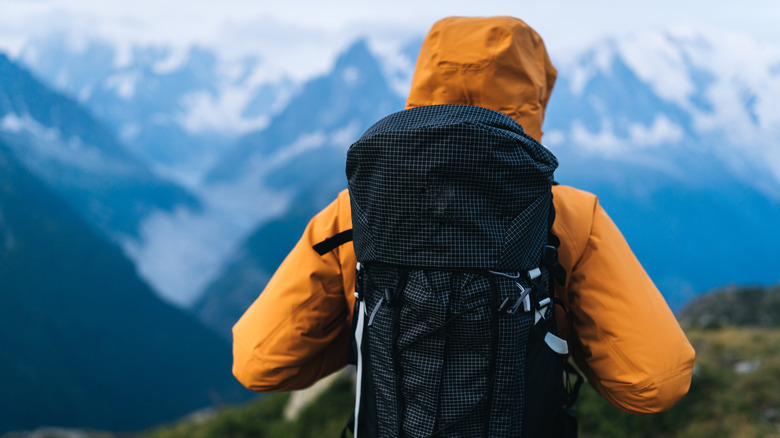Hit 3 Different European Countries On This Popular Hiking Route
We may receive a commission on purchases made from links.
There's nothing quite like hiking. The fresh air, beautiful scenery, and sound of boots crunching on a dirt path are relaxing and a welcoming escape to the hustle and bustle of everyday life. For avid hikers, the longer they trek, the more varied and beautiful the scenery. One unique hiking route in Europe leads hikers in a loop through three different European countries — France, Italy, and Switzerland. Interested in giving it a go?
Over 10,000 hikers attempt the Tour du Mont Blanc trek each year. At 102 miles (and 34,212-foot elevation gain), the hike is considered challenging and ideal for experienced hikers only. The trail circles Mont Blanc, Western Europe's highest mountain. The best time of year to attempt the journey is between June and October. Hikers can design their daily schedule based on how many miles they want to cover daily. And while camping is the cheapest way to travel the Tour du Mont Blanc, other accommodation options are also available, like refuges (mountain huts) and hotels.
Starting points, sleeping huts, and proper planning
Hiking Tour du Mont Blanc takes a lot of planning. How far will you walk each day? Where will you sleep? Will you take a rest day? Proper planning is essential before hitting the trails, including reserving lodges and refuges in France, Italy, and Switzerland. The Tour du Mont Blanc is popular, and accommodations can book up quickly.
A common starting point for the Tour du Mont Blanc is Les Houches in the Chamonix Valley (France). Many hikers will tackle the challenge in 7 to 10 days, but hikers can determine if they'd like to go faster or slower. An excellent way to plan how many miles to walk daily is to study a map of the area and the Tour du Mont Blanc trail. Create an itinerary and then book accommodation accordingly. It's helpful to start by booking your first night and then go from there. Along the trail, if a preferred hotel or refuge is unavailable, you'll have to adjust your itinerary and route for that day.
The official Tour du Mont Blanc website lists accommodations that welcome hikers around the mountain. You can book directly on the website, but this list is not exhaustive. With further research, planners can locate hotels and alternative lodging. For example, Chamonix and Courmayeur are popular ski destinations along the route. Hikers will have their choice between 5-star hotels and quaint bed and breakfasts.
Hiking the trail and safety tips
First of all, hikers should think twice about hiking off-trail. Stay on marked paths and avoid stepping on vegetation. The natural environment is fragile, and individuals should limit their impact, especially by leaving no trace of their visit behind.
One of the most challenging sections on the trail is the 13 miles between Les Contamines and Les Chapieux, which has an ascent of 4,692 feet. For more detailed information about different sections of the 102-mile journey, a well-researched guidebook, like "The Tour of Mont Blanc: Complete two-way trekking guide," can offer invaluable insights about what to expect each step of the way. A guidebook can also assist in the planning phase. Note, however, that even though the Tour du Mont Blanc trail is well marked, it's advised to travel with a map and compass for areas that may be trickier to navigate due to lack of or missed signposts.
As with any long-distance trek, hikers should know essential hiking safety tips. Know emergency numbers (Italy:112; France:112; Switzerland:144). Be prepared for storms. When one is approaching, stay away from peaks and waterways and seek shelter. Bring proper equipment, like comfortable hiking boots, a large waterproof backpack, clothing for hot and cold weather, and an emergency kit. Every emergency kit should include first-aid supplies and medicine, as well as a thermal tarp and a whistle. The Tour du Mont Blanc is truly an adventure. Happy hiking!


